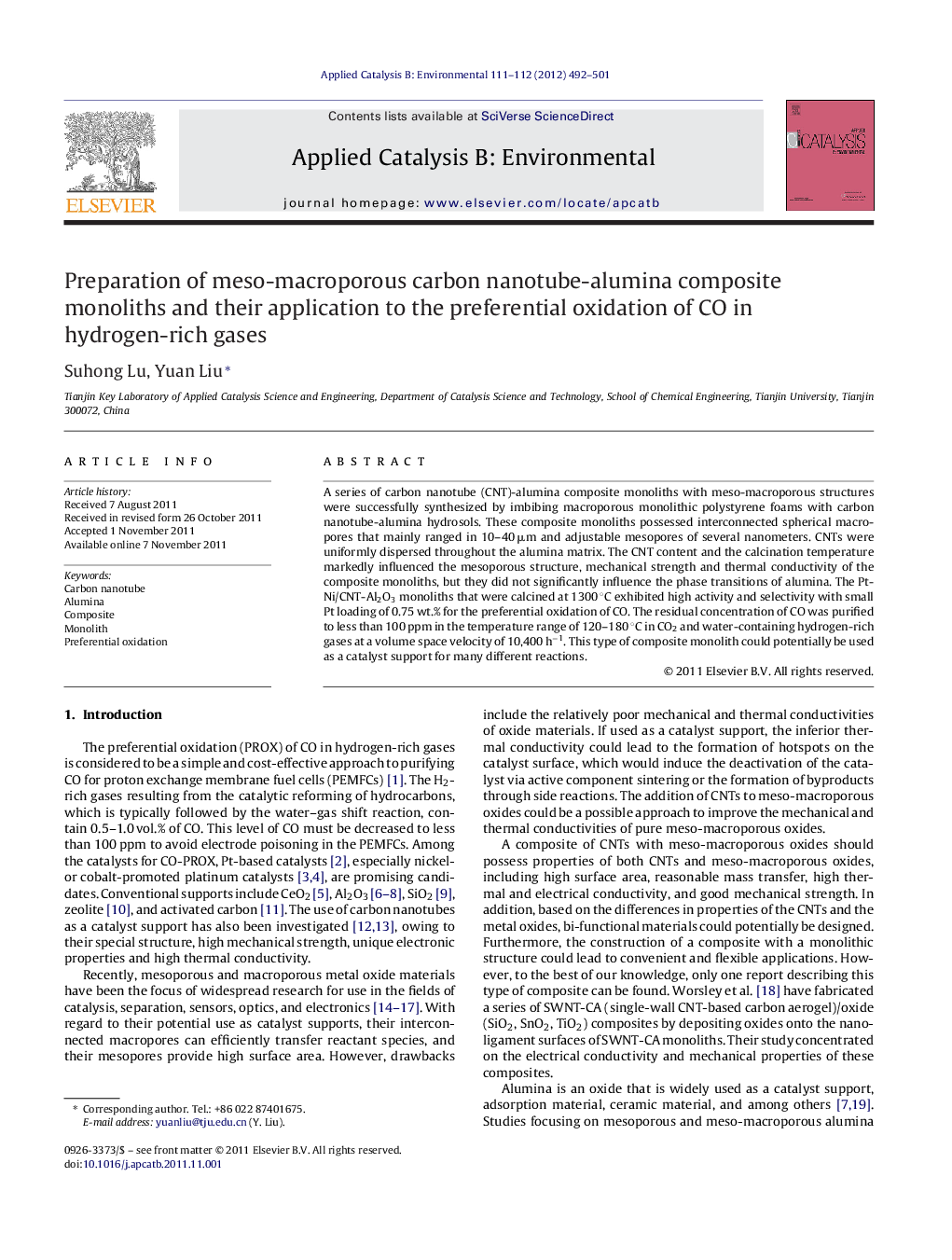| Article ID | Journal | Published Year | Pages | File Type |
|---|---|---|---|---|
| 46499 | Applied Catalysis B: Environmental | 2012 | 10 Pages |
A series of carbon nanotube (CNT)-alumina composite monoliths with meso-macroporous structures were successfully synthesized by imbibing macroporous monolithic polystyrene foams with carbon nanotube-alumina hydrosols. These composite monoliths possessed interconnected spherical macropores that mainly ranged in 10–40 μm and adjustable mesopores of several nanometers. CNTs were uniformly dispersed throughout the alumina matrix. The CNT content and the calcination temperature markedly influenced the mesoporous structure, mechanical strength and thermal conductivity of the composite monoliths, but they did not significantly influence the phase transitions of alumina. The Pt-Ni/CNT-Al2O3 monoliths that were calcined at 1300 °C exhibited high activity and selectivity with small Pt loading of 0.75 wt.% for the preferential oxidation of CO. The residual concentration of CO was purified to less than 100 ppm in the temperature range of 120–180 °C in CO2 and water-containing hydrogen-rich gases at a volume space velocity of 10,400 h−1. This type of composite monolith could potentially be used as a catalyst support for many different reactions.
Graphical abstract.Figure optionsDownload full-size imageDownload as PowerPoint slideHighlights► CNT-Al2O3 monoliths possess interconnected macropores and meso-pores. ► Carbon nanotubes can be uniformly distributed in the alumina matrix. ► CNT content and calcination temperature affect on mesopore structure, mechanical strength and thermal conductivity. ► CNT-Al2O3-supported Pt-Ni shows good catalytic performance for CO preferential oxidation.
